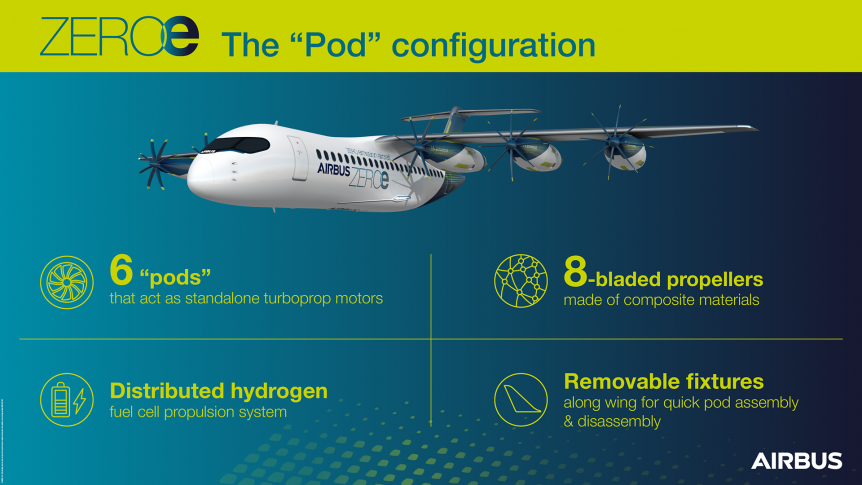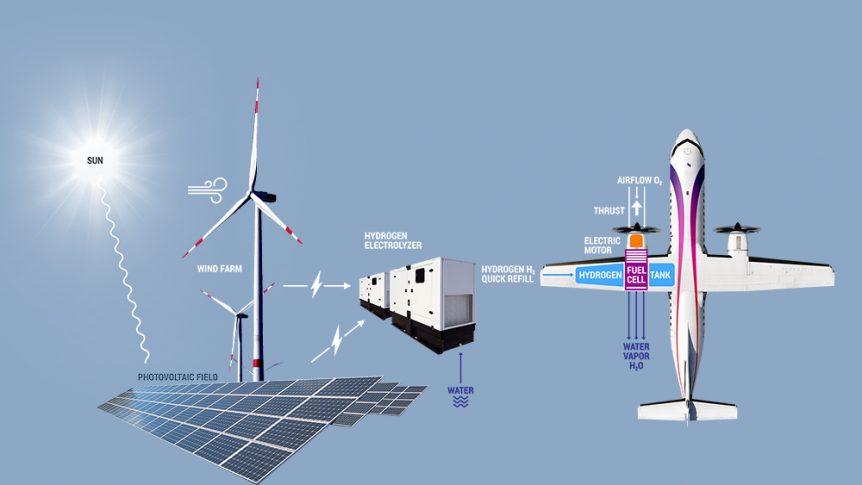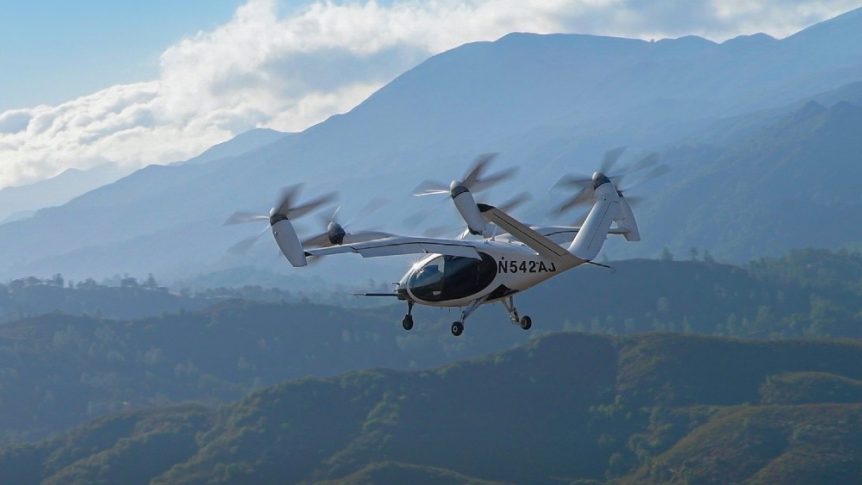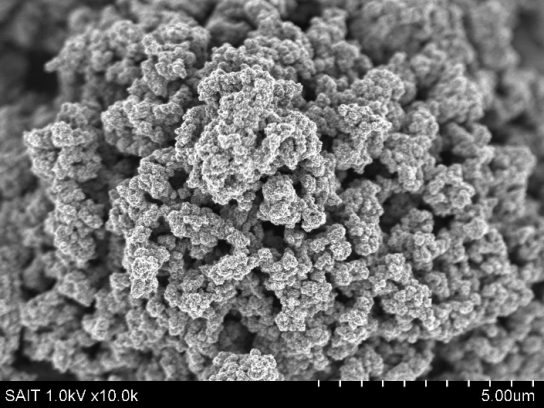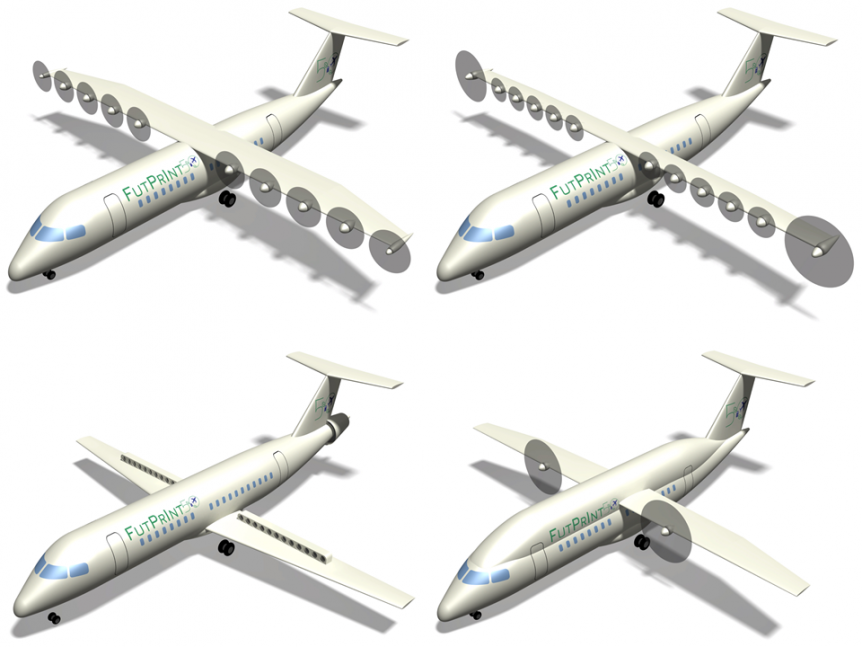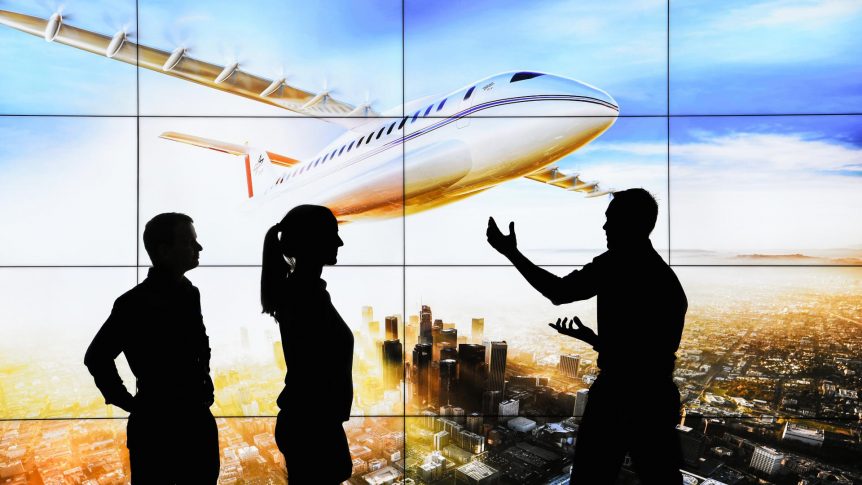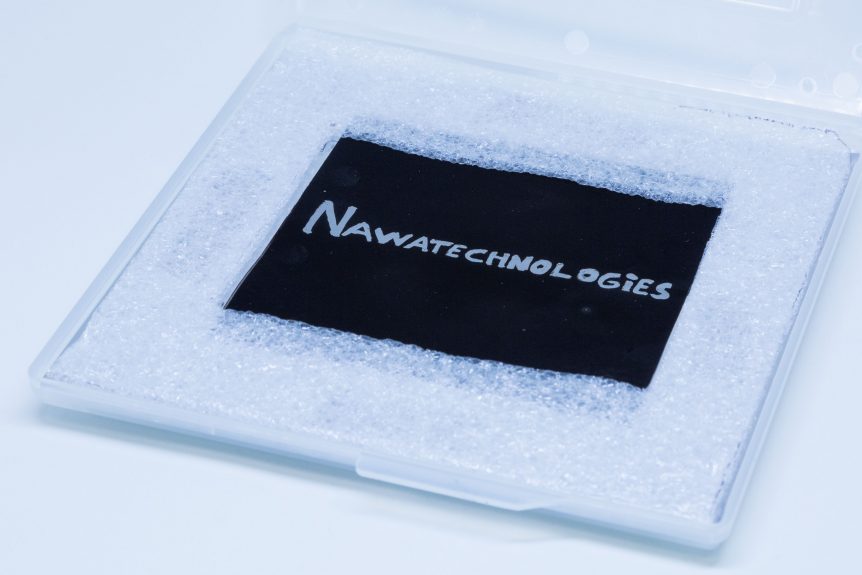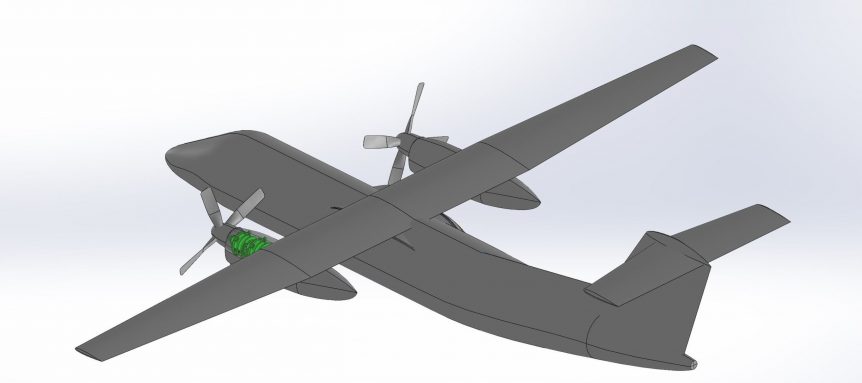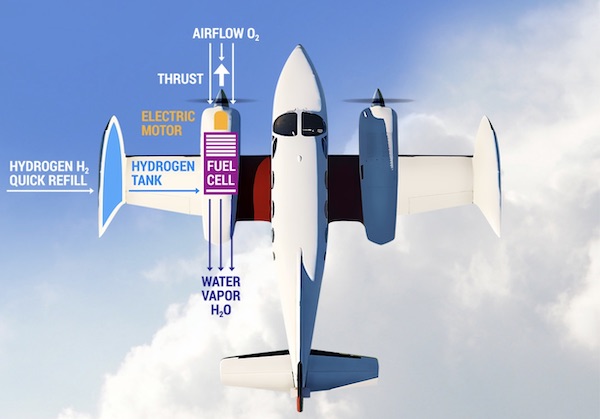Airbus announced its Zero E program in late September, showing three possible candidates for hybrid hydrogen power. Zero E, for zero emissions, is a tall order even for one of the world’s two largest aircraft companies. Now, the company makes yet another announcement – for a novel modular “pod” configuration – “a stand-alone propeller propulsion system powered by hydrogen fuel cells. It consists of the following elements:” A propeller Electric motors Fuel cells Power electronics LH2 tank A cooling system A set of auxiliary equipment Instead of housing the hydrogen fuel in the fuselage, Airbus creates a more spacious cabin by moving fuel storage to each pod. Each pod would be identical and modular. Components could be removed and replaced quickly, and if necessary, the entire pod could be removed for maintenance. One startling possibility, that of dropping a pod if it caught on fire, would probably not be well received in areas of dry forests or brushland. Liquid hydrogen …
ZeroAvia Gains Backing at High Levels
“Cannot be more proud and humbled to be a part of this stellar team!” That’s power system developer Gabriel DeVault’s response to ZeroAvia’s Chief Financial Officer Katya Akulinicheva’s enthusiastic endorsement of Bloomberg LP’s news. She listed the investors taking an active interest in ZeroAvia, including Ecosystem Integrity Fund, Breakthrough Energy Ventures, the Amazon Climate Pledge Fund, Horizons Ventures, Shell Ventures and Summa Equity. Already benefiting from a $16.3 million grant from Innovate UK, Aerospace Technology Institute and Department for Business, Energy and Industrial Strategy (BEIS), ZeroAvia will be able to push forward on plans to create a 19-seat hydrogen-powered commuter liner. According to Bloomberg, “ZeroAvia aims to demonstrate that it can fly a plane 500 miles (804 kilometers) with as many as 20 seats by 2023. It wants to scale up to 1,000 miles with over 100 seats by 2030.” With individuals such as Bill Gates and Jeff Bezos taking an interest, an aviation blog now feels a little like …
Joby “Unicorn” Gains Private, Military Backing
Joby Aviation is one of few “unicorns” in the electric Vertical Take Off and Landing (eVTOL) market, a billion-dollar enterprise. With funding coming from Toyota, several venture capital investors, Uber and the U. S. Army, Joby seems poised to demonstrate Urban Air Mobility (UAM) in a serious way. In 2011 JoeBen Bevirt, founder of Joby Energy, Joby Aviation, and creator of those knobby-looking tripods you see everywhere, invited Patrick McLaughlin to visit his design studio. Your editor got to tag along. On Woodpecker Ridge, north of Santa Cruz, JoeBen’s barn-like studio housed about a dozen engineers and designers all working on electricity-generating kites. He wore a T-shirt reading, “If you’re not living on the edge, you’re taking up too much room.” That edginess has helped him, in the last decade to be a major player, with now over 500 employees in the aviation sector. JoeBen and Patrick discussed motor design and integration with a controller Patrick had built from off-the-shelf …
Is There a Graphene Battery in Our (Near) Future?
Graphene is fascinating stuff, with tons of promise. Whether it can produce usable results for energy storage is still an open question. But Samsung and a startup called Real Graphene may have at least a start in that realm. GAC, a Chinese auto firm, seems to be promising batteries before the end of what is left of this year. There may be hope in the midst of a dark winter. Samsung’s Lagging Promise In 2017 a team of researchers at the Samsung Advanced Institute of Technology (SAIT) developed a “graphene ball,” promising a 45-percent increase in capacity, and five times faster charging speeds than standard lithium-ion batteries. Hoping to power mobile devices and electric vehicles, SAIT collaborated closely with Samsung SDI* as well as a team from Seoul National University’s School of Chemical and Biological Engineering. *Not a simple abbreviation, SDI stands for “Samsung with the initial letter S, ‘Display’ and ‘Digital’ with D and ‘Interface’ and ‘Internet Component’ with …
DLR’s Novel Configurations
Researchers from the German Aerospace Center (Deutsches Zentrum für Luft- und Raumfahrt; DLR) conducting research into the potential of new types of design have crafted novel configurations for future flight. The DRL and BDLI (German Aerospace Industries Association or Bundesverband der Deutschen Luft- und Raumfahrtindustrie) have published a white paper: “Zero Emission Aviation – Emissionsfreies Fliegen” explicating these configurations. Surprisingly, one of their major findings is that “Electric flight enables lighter aircraft with smaller wings and distributed propulsion systems.” Battery weight has caused MagniX and Ampaire to reduce the number of passengers or the cargo loads on conversions of existing airframes. To counter those issues, “An EU research project is investigating the potential for new propulsion systems and aircraft concepts.” Obviously, these new concepts will need to take advantage of advanced materials to lower airframe weight. Hybrids and Hydrogen Thousands of airliners parked in dry desert locations highlight how the COVID crisis has affected air travel. Despite the ongoing interlude …
DLR’s Future Visions
One Size Does Not Fit All DLR (Deutsches Zentrum für Luft- und Raumfahrt or German Aerospace Center) and the German Aerospace Industries Association (Bundesverband der Deutschen Luft- und Raumfahrtindustrie; BDLI) present future visions of electric aircraft. These range from a four-seat hydrogen-powered repurposed Pipistrel that nine years ago won the NASA Green Flight Challenge to large, multiple propeller, medium-range airliners. Their White Paper, “Zero Emission Aviation – Emissionsfreies Fliegen” (unfortunately available only in German) promotes the promise of “energy transition in air transport, with the goal of zero emissions,” and claims this is “possible by mid-century but requires a considerable increase in innovation.” Rolf Henke, the member of the DLR Executive Board responsible for aeronautics research and technology, explains, “The time has come to start a new chapter in aviation. Our white paper shows the path to emission-free flying for the ‘Green Deal’ in aviation, which will lead to new technologies, attractive high-tech jobs, fascinating products and the promotion of …
NAWA’s Straight Line Electrode to More Power
Most battery breakthroughs are five years in the future, following the basic rules of scientific journals and Popular Science magazine. The usual refrains are, “Further research is required,” and “Researchers expect commercial development within the next decade.” Rather than wait for the future, NAWA Technologies claims the world’s fastest electrode today and production now. NAWA’a brochure explains their Vertically Aligned Carbon NanoTube (VACNT) architecture is “key to its next-generation energy storage.” Think of a forest of carbon nanotubes through which current can flow. In the jumble of usual battery materials, an ion would have to clamber over boulder-like obstructions and possibly get hung up in the random intersections of conductive material. The VACNT architecture allows ionic flow as though they are cruising down a well-maintained interstate freeway. Constructed from carbon and graphene, VACNTs hold the promise of a “quantum leap” in battery performance. NAWATechnologies foresees “revolutionary improvements in power, energy, lifecycle and charging time.” Their Ultra Fast Carbon Electrode contributes …
A Dash of Hydrogen
Getting the Parts Free, Charged for Refills What if future flight had a simple “return the old fuel container and get a new one” business model? Paul Eremenko, founder of California startup Universal Hydrogen, wants to try it out in a Dash 8 airliner equipped with two 2-megawatt motors supplied by MagniX. Poor analogy perhaps, but in his boyhood, your editor had a camera that was sold at the store complete with a roll of film already inside. All you had to do when you took all your pictures was send it by mail, with a check or money order, and a week later, you got the reloaded camera back with the prints and negatives of your pictures. This klunky, pre-digital plan carried over from Kodak’s version 100 years before. Today, with digital photography having supplanted those earlier, more tedious processes, we save on postage and wasted photos. Let’s face it – we all like rapid rewards and instant gratification. …
ZeroAvia First Out of the Gate with Hydrogen Flight
An Historic Hydrogen Outing While Airbus and MagniX promote the near- and not-so-near virtues of hydrogen-powered flight, ZeroAvia has demonstrated such flight with the largest H2-powered aircraft so far. Their Cranfield, England-based Piper Malibu flew on H2 power for the first time September 24 on an eight-minute circuit. The blue Malibu reached 1,000 feet and a top speed of 100 knots true air speed. Quick to capitalize on the successful mission, , ZeroAvia founder and CEO Val Miftakhov held a press conference the next day. In it, he explained his team,“has had discussions with seven aircraft manufacturers about possible retrofit and new-build applications for the propulsion system. He said the company has signed letters of intent with 10 airlines that have expressed an interest in the program based on presentations made to around 30 different prospective operators.” Earlier flights in Hollister, California and Cranfield were battery powered “to evaluate different elements of the powertrain.” Unspecified modifications helped prepare the craft …
HyPoint and Hydrogen Flight
Their web site proclaims, “HyPoint, Inc. is developing the next generation hydrogen fuel cell system with zero CO2 emissions and game-changing energy performance for the air transportation and urban air mobility market.” Pointing out a “fundamental barrier at a chemistry level” for lithium-ion batteries, the fuel cell maker launches some seemingly outrageous claims. HyPoint states, “Our patented technology increases operational time and utilization rate while decreasing TCO (total cost of operation) of any flying platform.” They claim “5X operational time, 10X utilization rate, 20X faster charge,” and a TCO 90 percent of equivalent battery-powered systems. As we have reported here, demonstrated outputs for lithium-ion cells are around 350 Watt-hours per kilogram, and about 260 Whr/kg at the pack level. HyPoint says it can already demonstrate a system-level specific power of 1,000 Watts per kilogram and an energy density of 530 kW-hr/kg. The company points to its next generation of “turbo air-cooled” units to produce even more power and show better energy density. These improvements would make the …

